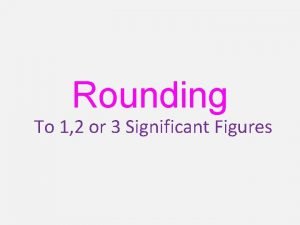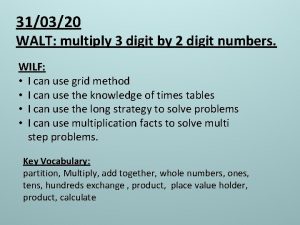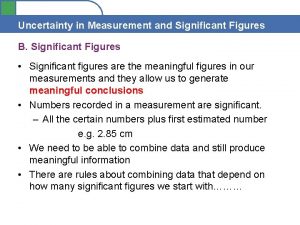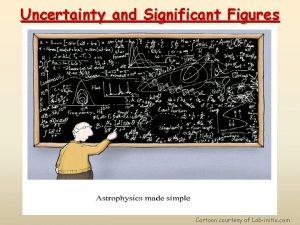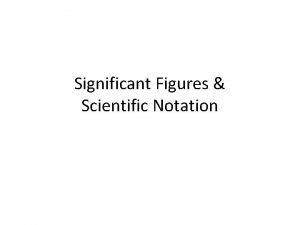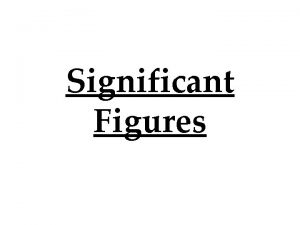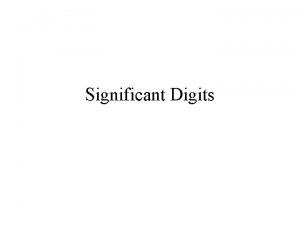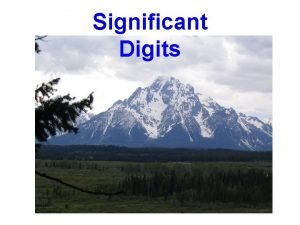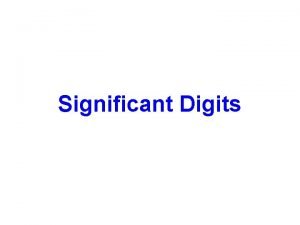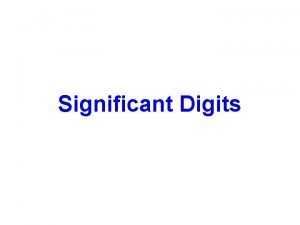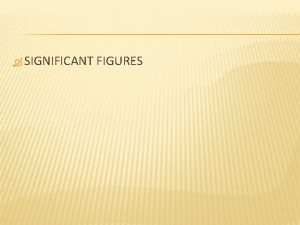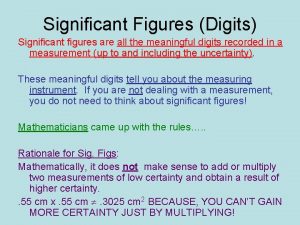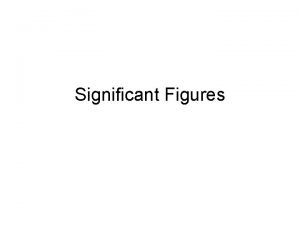Determining Significant Digits and Rounding Significant figures are









- Slides: 9

Determining Significant Digits and Rounding

Significant figures are critical when reporting scientific data because they give the reader an idea of how well you could actually measure/report your data.

Rules for Significant Figures 1) ALL non-zero numbers (1, 2, 3, 4, 5, 6, 7, 8, 9) are ALWAYS significant. Example: How many significant figures are in each: ▪ 157 ▪ 9. 86 ▪ 111, 589

2) ALL zeroes between non-zero numbers are ALWAYS significant. (Sandwiched zeros) Example: How many significant figures are in each: ▪ 702 ▪ 6. 305 ▪ 805, 601

3) ALL zeroes which are SIMULTANEOUSLY to the right of the decimal point AND at the end of the number are ALWAYS significant. Example: How many significant figures are in each: ▪ 6. 000 ▪ 102. 230 ▪ 0. 4050

4) ALL zeroes sandwiched between a non- zero number and a decimal place are ALWAYS significant. Example: How many significant figures are in each: ▪ 20. 1 ▪ 0. 5090 ▪ 400. 00 ▪ 10. ▪ 0. 00040

More Rules for Counting Significant Digits In scientific notation, significant digits count in the first part of the number. Examples: 5. 8 x 10 2. 00 x 10 -8 Write the scientific notation for: ▪ 500 with 1 significant figure ▪ 500 with 2 significant figures ▪ 427 with 3 significant figures ▪ 427 with 2 significant figures

Numbers that are defined, not measured, have an infinite number of significant digits. These numbers do not limit the number of significant digits in any calculation. Examples: The number of m in a km (1000) is defined: it has infinite zeros after the decimal point. (infinite) The number of minutes in an hour is defined: it is 60. 0000000. (infinite) Your weight is measured: the number of sig digs depends on the precision of your balance.

Significant Digits and Rounding B. To decide the number of significant digits to use in your answer to a calculation: For addition and subtraction, your answer should match the smallest number of decimal places in the question. For multiplication and division, your answer should match the smallest number of significant digits in the question. For long multi-step calculations, round only the final answer, using the multiplication/division rule. Examples 12. 5 + 002. 700 = 10 + 3. 55 = 843. 21 - 79. 6 = 999. 9 x 24. 3 = 427. 2 divided by 37 = Find average of 19. 01, 18. 9 19. 03

